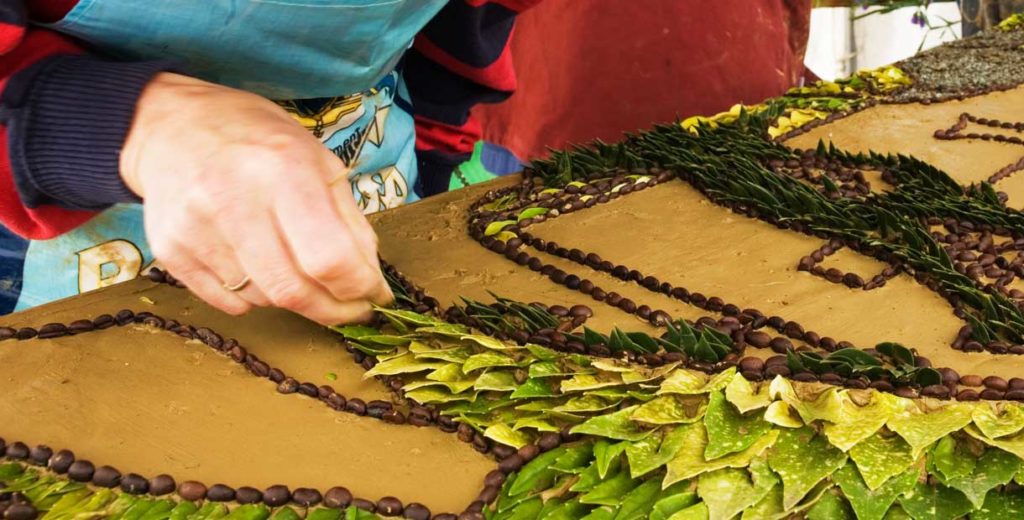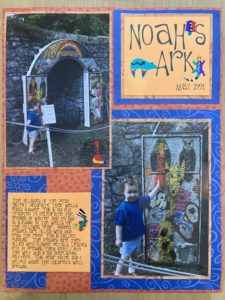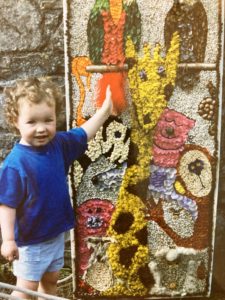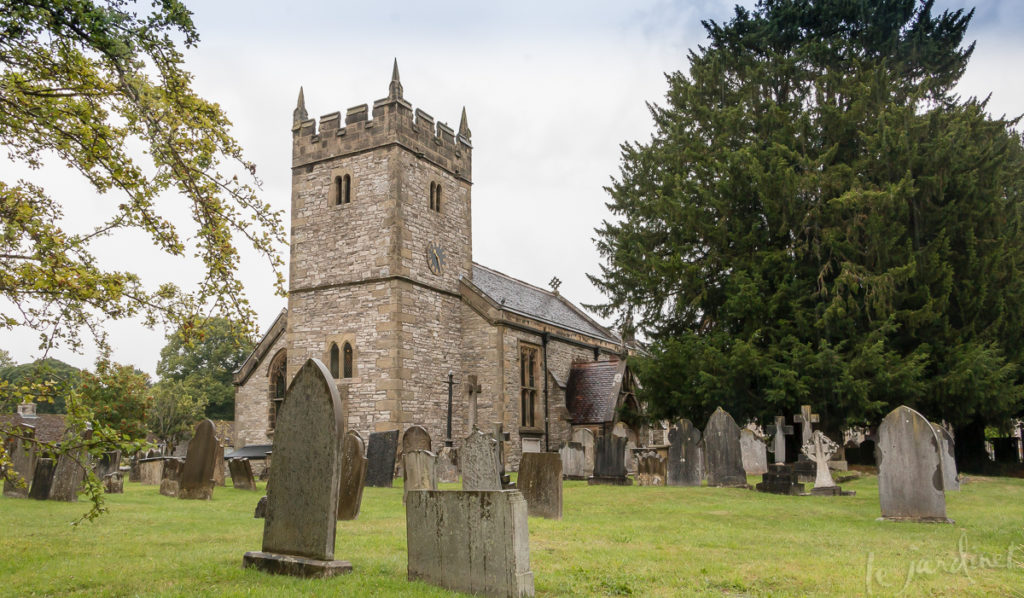Ancient Garden Art: Well Dressings
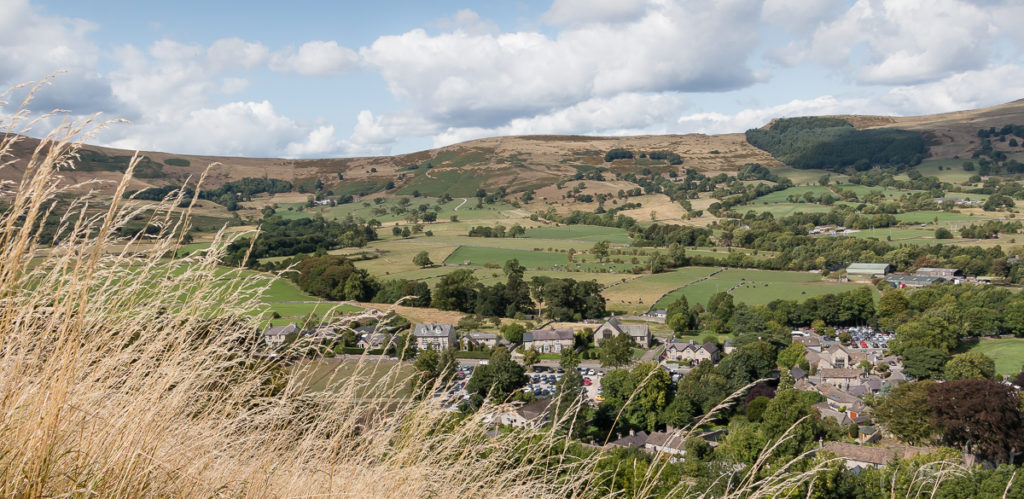
Mystery, secrecy, intrigue – it all happens behind closed (barn) doors in the Peak District, Derbyshire. Plans are made, sketches discussed, materials gathered and volunteers found as villagers huddle together to discuss the next well dressing.
Well dressing is an ancient, pagan tradition dating back to the Romans or Celts (no-one is quite sure) when villagers thanked the "gods" for the abundant fresh water springs that were found throughout this area. Today, more than 80 villages and towns celebrate and display floral masterpieces as part of a festival, yet the tradition is still surprisingly less well-known beyond the county boundaries.
Andy and I spent the early years of our marriage in a modest stone cottage in Ashford-in-the-Water, a picture-perfect village within the Peak District where the loudest noises are the bleating of sheep and the thwack of the cricket ball on Sundays. Those were halcyon days when we learnt how to be parents for the first time as our daughter Katie was born, we rambled freely over the rolling hills that were criss-crossed with public footpaths, we were blessed with wonderful friends, and led a simple yet abundant life. A "mother and toddler" group met weekly in the church hall – a lifesaver for those of us who were stay at home mums (dads staying at home was still a rarity in the 80s) and through that network Katie and I were invited to take part in creating the Children's Well, one of six well dressings in the village.
How well dressings are made.
I was relieved not to be asked to help with this first part! The large wooden frames were taken to the river where clay from the river bottom was 'puddled' or kneaded into it, then smoothed out like plaster. It took several strong people to haul them back out! (I understand that today it is more typical to buy fresh clay rather than take it from the river bed). Most designs comprise several boards which are worked on individually then finally assembled on site.

In this design coffee beans are being used to outline the image. Seed heads or small pebbles may also be used.
An image is then drawn onto the wet clay using a toothpick or skewer – our theme that year was Noah's Ark. One of the villagers had done the artwork on paper which was then transferred to the clay. The themes are often biblical but not always.
To mark the outline we used 'alder nobs' (seed heads), but any natural material could have been used. The effect is to create something similar to a bold, black Sharpie outline.
Now it was time for us to join in! Kids and parents alike 'colored' in the design using overlapping layers of petals and leaves. Overlapping – like tiles – allows rainwater to run off. For example layers of blue hydrangea petals are a favorite for creating a beautiful shaded sky. A LOT of gardens were foraged!
- The finished children's well in 1991
- Katie, age 3, showing us the feather that she added
Bear in mind that our village had six wells, each with its own dressing and we were all sworn to secrecy! No-one knew what the other designs were until the start of the festival when they were all erected for display.
Examples of Finished Designs

This is an example of a well dressing in Tissington, 2007. The well itself is the stone basin in the lower middle. Photo credit: WhaleyTim, CC BY-SA 3.0 <http://creativecommons.org/licenses/by-sa/3.0/>, via Wikimedia Commons
The finished results are truly works of art and it's always exciting on the day of the 'big reveal' to see what your friends and neighbors have been working on! Displays are usually left up for at least one week with the start celebrated in true English fashion with a festival that involves the extended community. They are always a popular event with local tourists too.

Close-up of intricate layering in the Youlgreave design. Photo credit: https://letsgopeakdistrict.co.uk/
Sadly, this beauty is ephemeral as the clay starts to dry and crack after a week or so, at which point they are taken down and the frames stored until the following year.
Ashford-in-the-Water celebrates its festival on Trinity Sunday and combines it with a wonderful floral display in the village church. The festival officially opens with an outdoor Blessing of the Wells service by the vicar. Other villages and towns have their festivals on different weeks throughout spring and summer, each one somewhat unique in execution yet common in purpose. You can see lots more photos of well dressings here. (Click on gallery, select a year then enjoy samples from each of the villages).
We were so fortunate to be able to take part as village residents – and that's why we have organized our upcoming tour to Derbyshire, England to coincide with the 2022 well dressing festival festival in Ashford-in-the-Water. After a traditional Sunday lunch at a delightful country hotel in the heart of the village, Andy and I will lead an informal tour through the winding streets, pointing out places of interest and the decorated wells. We will return to the church in time for the Blessing of the Wells and have the opportunity to see the floral displays inside the ancient church.
Would you like to join us?
We have just a couple of spots left for this very personalized tour.
Thank you to https://www.visitpeakdistrict.com/ for allowing me to use several of their photos for this blog post.
Subscribe to Receive Blog Posts
Gardening inspiration delivered right to your inbox from Le Jardinet

